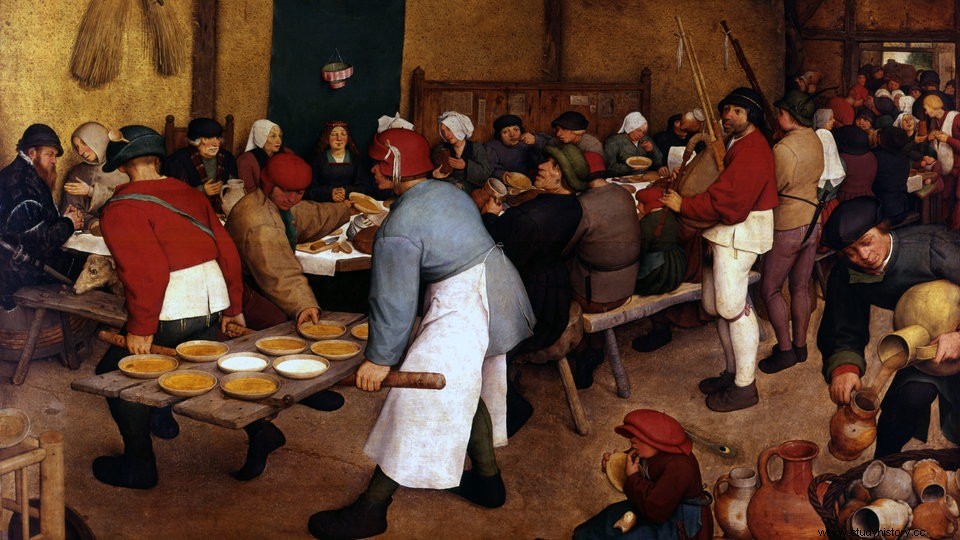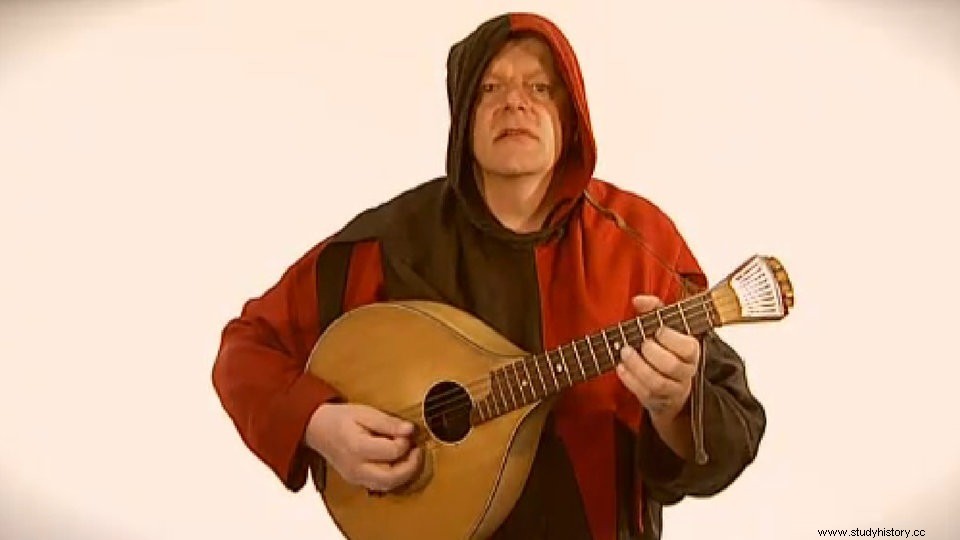From wildly romantic to gloomy and backward - many people imagine life in a medieval castle to be different than it was in reality. The lords of the castle spent a large part of their lives in the castle. Her everyday life was hard, tightly organized and not very varied.
The castle as an economic center
In the Middle Ages, a nobleman usually owned not only the castle, but also the surrounding lands. He had to ensure that his serfs tilled and harvested the fields, mowed the meadows and cleared and tended the forests.
The castle was also the administrative seat, the storeroom and the court. The lord of the castle slept here, as did most of the servants.
The typical castle of the Middle Ages is divided into several sections. The center is a building in which the living room and ballroom are located, the palas .
The building with the thick walls extends over several floors. The lord of the castle and his family lived on the upper floors. The castle's administration and garrison were often housed on the ground floor.
The Palas is surrounded by a Burghof , which in turn is surrounded by a mighty ring wall is bordered. Along this wall are most of the outbuildings of the castle, including the kitchen, the stables, the servants' quarters, the storerooms and the workshops.
Large castles often had a Vorburg , which was also walled. Many of the subjects who had to work in the fields during the day slept here, along with their cattle.

Structure of a typical castle in the Middle Ages
The people in the castle
Hundreds of people often lived in the larger castles of the Middle Ages. Several dozen often belonged to the family of the lord of the castle alone, including women, children and unmarried relatives. Ten or more men belonged to the crew. They guarded the castle and kept fit for the coming war.
There were also kitchen masters and staff, farmhands for the fields, vineyards and forests, and maids who served the lady of the castle and her relatives. Also, craftsmen such as blacksmiths, stonemasons and carpenters could not be missing in any castle.
The blacksmith shoed the horses, made weapons or repaired them. The stonemasons and carpenters maintained and maintained the buildings. The stable master cared for the animals.
Rich nobles could even afford a master huntsman and his assistant who took care of the hunting dogs and the care of the game population.
The Burgvogt was something like the manager at the castle. He watched over the servants, delegated the various tasks that needed to be done and was entrusted with all administrative tasks and the judiciary.
The sun as a clock
Everyday life in a medieval castle depended on the position of the sun. The castle residents got up at dawn and worked until dark.
The highest priority was the care of those people who were dependent on the lord of the castle. Therefore, the daily routine at the castle was geared towards agriculture.
In smaller castles, the lord of the castle and his family also had to work together. Only Sunday was free and was used for recreation and for going to church.
After dark, life in the castle died down. It was difficult to illuminate the rooms. A lot of wood was also needed. For this reason, the large representative ballroom was only heated on special days.
Towards evening, the castle residents withdrew to the smaller rooms, the so-called bowers, as these heated up faster.

It was also pretty dark inside a castle during the day
The unbalanced diet
The inhabitants of the castle did not eat as varied and opulently as some knight films would have us believe. Potatoes, rice and pasta did not exist in Europe in the Middle Ages. The main ingredient of every meal was grain. It was made into bread, beer and - because of the bad teeth of the residents - often made into porridge.
Eggs and milk were also plentiful. Both were often processed into a mush together with the grain. Meat was rare, especially for the servants.
The cattle were too valuable to be slaughtered early. It was only put on the table when it had done its job, for example as a beast of burden in the field. Then it was often old and tough.
Water, milk, beer and wine - the range of drinks in a castle was not particularly varied either. Since the water was often contaminated and harbored numerous pathogens, the castle residents preferred to drink alcoholic beverages.
If enough fruit trees were cultivated in the area, there was juice from pears, apples, cherries or plums, at least in the summer months. However, the juices didn't last long and had to be drunk before they tipped.

There was also often porridge to eat at festivals
Doomed to idleness in winter
The seasons shaped the everyday life of the castle residents. In winter, people were practically doomed to do nothing, as it was freezing cold inside and out. Only a few rooms could be heated at all.
The fields also lay fallow, agriculture had to rest. If it snowed, some hilltop castles were cut off from the outside world for a long time.
Only after the cold season did the castle residents return to the fields to sow grain and vegetables. Spring was also the time of jousting tournaments, battles and feuds, since work in agriculture did not require too much effort.
In the summer, the armed conflicts usually rested. In silent agreement, the lords of the castle took care of bringing in the harvest. By late summer most of the work had already been done and the castle residents celebrated this with great parties.
When the fields were harvested in autumn, some lords of the castle organized hunts on their property. Some went to war.

Castles were often snowed in in winter
Welcome changes
Everyday life in a castle was hard. The inhabitants of the castle enthusiastically accepted every break in their monotonous everyday life. Jugglers and minstrels promised a welcome change. They went from village to village and also stopped at the castles for a few days.
Knife swallowers, fire breathers, magicians and tamers were just as much a part of it as musicians or reciters of great knightly epics.
The traveling people usually performed at larger festivals - or a festival was organized especially for them. This also included the dance performances of the castle residents and games with balls among the male nobles.
 Start video, cancel with escape
Start video, cancel with escape Minstrels
00:47 min. Available until 03/11/2024.
The tables were richly set at the festivals, especially when other nobles came to visit. Wild boar, deer and rabbits were brought back from the hunt, and cranes, herons, peacocks and swans were also roasted and served to the dear guests.
Those who could afford it had spices and sugar brought in from distant lands. These were often so expensive that an entire cowshed had to be used as payment.
The selection of wines was exquisite:wines from Bavaria had a bad reputation, while Moselle and Rhine wines were very popular. And if the lord of the castle had the wherewithal, he bought wines from France, Italy or the Holy Land.
Such opulent festivals were not held often and often lasted several days. They were the highlight of the year for the castle residents.
